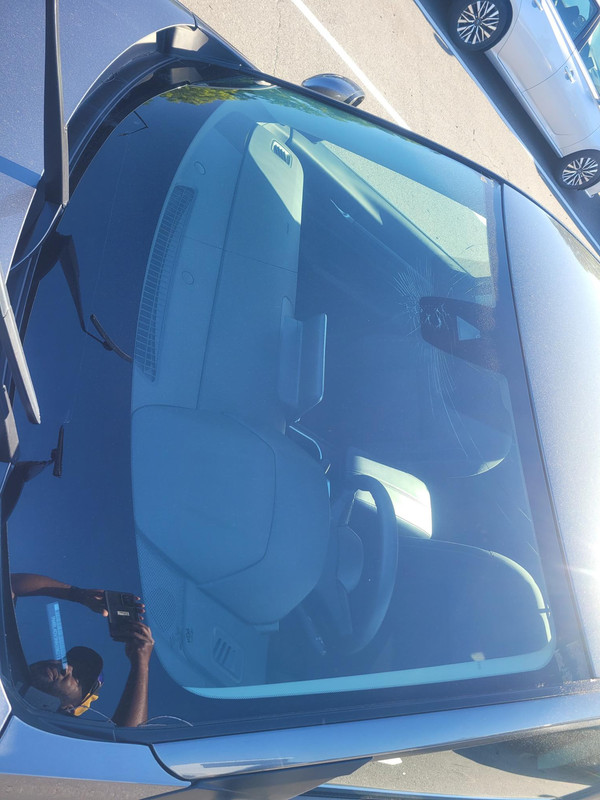When it comes to glass, the choices can be overwhelming. With options like laminated and tempered glass available, how do you know which one fits your needs? Whether you're looking for auto glass for your car or considering a new installation at home, understanding the differences between these two types of glass can make a world of difference. So, let's dive into Facts About Laminated vs Tempered Glass: What You Need to Know.
Understanding Glass Types
What is Laminated Glass?
Laminated glass consists of two or more layers of glass with a layer of polymer interlayer, typically polyvinyl butyral (PVB), sandwiched in between. This construction not only enhances safety but also provides sound insulation and UV filtering. When broken, the glass shards adhere to the interlayer rather than shattering into dangerous pieces.
What is Tempered Glass?
Tempered glass, on the other hand, is made by heating ordinary glass to high temperatures and then cooling it rapidly. This process increases its strength and makes it more resistant to impact and sudden temperature changes. When shattered, tempered glass breaks into small, blunt pieces rather than sharp shards.
Key Differences Between Laminated and Tempered Glass
1. Safety Features
When you're considering auto glass replacement Greensboro, safety is paramount. Laminated glass tends to hold together upon impact due to its interlayer, making it less likely for passengers to be injured by flying shards. Conversely, while tempered glass is strong and break-resistant, it shatters completely upon impact.
2. Sound Insulation Properties
If you often enjoy a quiet ride in your vehicle or serene moments at home, you'll want to consider sound insulation properties. Laminated glass offers superior sound dampening capabilities compared to tempered glass due to its interlayer design.
3. UV Protection
Another aspect worth noting—especially if you’re looking into windshield replacement Greensboro—is UV protection. Laminated glass can block up to 99% of harmful UV rays thanks to its PVB layer.
Applications of Laminated vs Tempered Glass
1. Auto Glass Usage
In the realm of auto glass, both laminated and tempered varieties are utilized extensively. Windshields are often made from laminated glass for safety reasons while side windows are commonly manufactured from tempered glass.
2. Architectural Applications
In architecture and building design, laminated glass is frequently chosen for facades that require durability along with aesthetic appeal. On the contrary, tempered glass finds its place in shower doors and tabletops due to its contemporary look and strength.
Cost Comparison: Which is More Affordable?
1. Price Range for Laminated Glass
Typically speaking, laminated glass tends to be pricier than tempered due to its complex manufacturing process involving multiple layers.

| Type | Average Cost (per square foot) | |------------------|--------------------------------| | Laminated Glass | $15 - $30 | | Tempered Glass | $10 - $25 |
2. Price Range for Tempered Glass
On the other hand, tempered glass may prove more budget-friendly but remember that this cost can vary based on thickness and treatment specifications.
Durability: How Long Will It Last?
1. Lifespan of Laminated Glass
Laminated glass usually has an extended lifespan if maintained properly; however, exposure to environmental factors can affect its longevity over time.
2. Lifespan of Tempered Glass
Temperatures fluctuations might wear down tempered over years but generally have a robust lifespan under standard conditions.
Installation Considerations for Both Types of Glass
1. Installation Process for Laminated Glass
- Ensure proper measurements. Use specialized adhesives during installation. Allow adequate curing time before use.
2. Installation Process for Tempered Glass
- Cut panels based on measurements. Edges must be polished before tempering. Secure using standard fittings without adhesive requirements.
Maintenance Tips: Keeping Your Glass Pristine
1. Caring for Laminated Glass
- Clean regularly with non-abrasive solutions. Avoid harsh chemicals that could degrade the interlayer over time.
2. Caring for Tempered Glass
- Use soft cloths while cleaning. Avoid drastic temperature changes that may cause thermal stress fractures.
Environmental Impact: Which Is More Eco-Friendly?
Both types have their pros and cons when considering sustainability:
- Laminated uses chemicals during production yet can last longer. Tempered typically requires less energy post-manufacturing but may not last as long in certain applications.
Common Myths About Laminated vs Tempered Glass
Myth 1: All Auto Windshields Are Made from Tempered Glass
This notion is incorrect; most windshields utilize laminated technology due to safety regulations!
Myth 2: Tempered Is Always Stronger Than Laminated
While tempered has impressive https://al-nasr-sports-club.org/user/aearneqyhh strength properties in specific contexts—laminated excels in safety features when it comes down to human protection during accidents!
FAQs
Q1: Can I use laminated glass in my vehicle's side windows?
A1: While possible technically, it's more common—and cost-effective—to use tempered because it meets industry standards effectively for side windows.
Q2: Is laminated or tempered better for homes?

Q3: How does weather affect these glasses differently?
A3: Extreme temperature variations could cause issues with both types; however—laminated handles humidity better thanks largely due its protecting interlayer!
Q4: Can I replace my windshield with either type?
A4: Typically! Most windshields today utilize laminated technology owing largely towards enhancing passenger safety overall!
Q5: Are there scratches that can't be removed from these glasses?
A5: Yes! Deep scratches on either type might require professional polishing—or full replacement based on severity level encountered overall!
Q6: Does thickness matter when choosing either type?
A6: Absolutely! Thicker materials will generally offer enhanced durability regardless if going down laminated route—or opting instead toward using hardened variants!
Conclusion
Navigating the waters between laminated versus tempered glass doesn't have to feel like rocket science! Understanding the nuances involved—safety features included—can help guide your decision whether you're replacing auto-glass or installing something new at home! Ultimately both types serve unique purposes tailored specifically according individual requirements/preferences alike ensuring everyone stays safe while enjoying beautiful views through clear panes!
So when facing your next project involving auto or architectural details don’t forget these essential facts about laminated vs tempered—the knowledge gained here today will surely help lead you toward informed choices down road ahead!